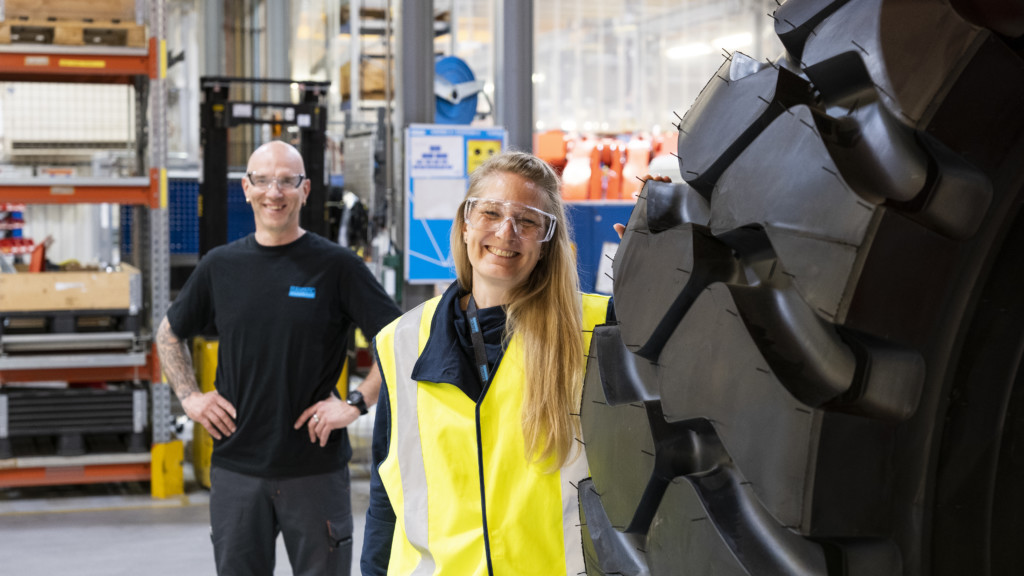
I love to see our customers’ smiling faces and to know we succeeded in creating the right garment.
Soile Pakarinen has spent over 20 years designing casual wear, outdoor clothing, and private label B2B garments. About eight years ago, she pivoted her career towards sustainability, joining Lindström in 2016.
I wanted to find something more sustainable. And what could be more sustainable than rental workwear?
“I’m really happy to be at Lindström; working with this team of professionals is very rewarding. There are always challenges ahead and there’s always something new to learn—I’m never bored.”
Essential skills: creativity and co-creation
Creativity and teamwork are at the core of Soile Pakarinen’s work philosophy. Collaborating closely with a global team of experts, Soile designs and develops workwear concepts, collections, products, and product platforms for the EU market. She also designs visual marketing materials and participates in brand photo and video shoots.
Managing her time well is essential since projects can last over two years, and many run at the same time. “I work on around three projects at a time with different product managers, so communication and time management skills are important. We often have fittings and meetings where some people participate via video so we need to find ways to keep everyone involved and informed.”
Soile adds: “As a global team spread across several countries, we communicate in English, which is not anyone’s native language. This means we need to put extra effort into ensuring that everyone understands the main ideas and important details correctly.”
Designing for sustainability
Lindström’s circular business model aligns seamlessly with Soile’s sustainable thinking. “My main goal is to design products with the maximum life cycle to minimise textile waste. I design functional products that satisfy our goals as a sustainable company as well as our customers’ goals.”
Our products are designed to be versatile and can often serve several industries. Along with the easy and eco-friendly nature of our service model, our product range and product attractiveness are decisive factors for our customers.
To achieve our company goal of halving GHG emissions by 2030, Soile and her team carefully select and test fabrics to ensure they meet our quality and sustainability standards, and that they can withstand our industrial laundering process.
Washing, repairing, and maintenance are all part of our service offering. Our garments have only the essential amount of details and accessories to remain easy to repair and maintain.
Sustainability is truly a lifestyle for Soile Pakarinen. In her free time, she enjoys finding treasures at second-hand markets and creating garments from recycled materials with her daughter, including cosplay outfits.
“You don’t always have to go into the shop and buy something new. There’s so much stuff in the world that is still in perfect condition to be used.”
Human-centred approach to product design & development
Taking a human-centred design approach, Soile emphasises the importance of empathy and understanding customer needs. Lindström operates in 23 countries, each with unique climate and cultural differences, so staying up to date with the needs of each region is a must.
Soile explains: “Even within the EU, where I mainly work, there are varied conditions. So we need to get familiar with the needs of different regions and try to satisfy everybody.”
Since our garments are designed to meet diverse industry needs, not just specific occupations, Soile systematically follows requirements and trends across industries. For example, our recently launched WorkerPro Collection caters to various light and heavy industry professionals.
The best way to create high-quality, sustainable solutions is to know what your customers need. Interviewing customers and visiting their work environments, when possible, allow us to dive deep into industry workers’ needs. It’s important to see for yourself what kind of garments they’re using now and whether they’re lacking something.
As a designer, Soile incorporates various needs into the product design. For workwear, this means addressing user needs like ergonomics, practicality, safety, and comfort. She also considers aesthetics, ensuring the design is timeliness since the garments are meant to last a long time. Additionally, she focuses on economic and ecological factors like production efficiency, durability, repairability, and easy maintenance. Every product development project maps and analyses these needs.
Testing garments and getting feedback also help us develop the best possible solutions. Soile finds the most satisfaction when end users are happy with the garments. “I love to see our customers’ smiling faces and to know we succeeded in creating the right garment.”
Towards 100% textile recyclability
Reaching our ambitious goals to recycle 100% of our end-of-life textiles by 2025, and to use more recycled fibres require industry-wide cooperation.
Soile explains: “It takes a lot of resources and energy to turn garments into fibre and create new materials. It’s not just up to Lindström—we need more players in the textile industry to find ways to use resources more efficiently.”
Soile Pakarinen also stays updated on industry trends and new technologies, such as 3D tools in the design process. For example, in our recently launched WorkerPro collection, we used 3D tools to create visual materials. These tools not only improve efficiency but could also help achieve zero-waste.
“My wish for the future is that 3D technologies and AI could together help us to create zero-waste garments,” she concludes.




